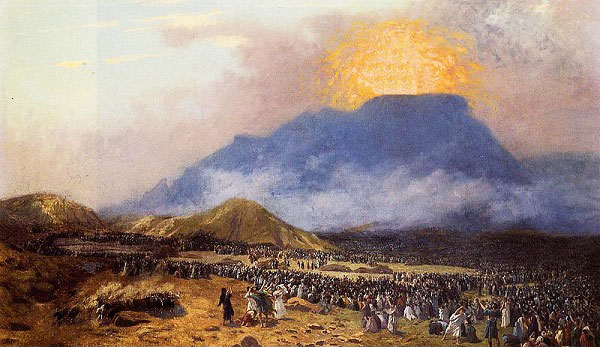
The 1920s was a decade proving to have special importance not only for the Jews but also for the Middle East as a whole. Importantly, the events of this decade had profound effects on the future of Israel.
The first important happening at the start of the decade was the birth of Turkey.
The Ottoman Empire had ceased to exist and was reduced merely to the region of Anatolia. However, the Turkish nationalism was well alive and kicking in the Turkish minds. Contrary to before, the nationalistic sentiments of the Turks were blazing all the more, and the thoughts of freeing their country from the clutches of the Allied nations to create an independent nation of Turkey were ever-growing in them. Here, it was ‘Mustafa Kemal Pasha’ popularly known as ‘Mustafa Kemal Ataturk’, a Turkish military officer, who successfully accomplished the task of properly directing this nationalism in the required direction.

After World War I, the whole of the Ottoman army was disbanded. Of course, the battalions under Mustafa Kemal too were dissolved. On returning to Istanbul in November 1919, within no time Kemal sensed the simmering anger across the nation against this humiliation. He also became aware that people were preparing with whatever possible means to resist it, but the resistance was still unstructured and disorganized.
Interestingly, it was Kemal himself who was deputed with the full rights being a ‘trusted officer’ to crush the discontent. However, Kemal used this opportunity to unify and shape the nationalism among the Turks at different places.
Kemal then held a congregation of the local leaders representing the people of various places. The congregation adopted the resolution of the independence of Turkey. A transitional government was also established with Kemal being elected as its head. However, having realized of Istanbul not being safe anymore, Kemal made ‘Ankara’ the new capital of his transitional government. The city of Ankara was situated 300 miles away from Istanbul in the heart of Anatolia. Kemal also began to rebuild the Turkish army.

In 1920, the Allied nations forced the Ottoman Sultan to sign the ‘Treaty of Sevres’. Kemal rejected the treaty which in fact further divided Anatolia. Later, displaying exemplary courage and bravery, Kemal pushed out the Allied forces one after the other, out of Anatolia. He was aided in his campaign by Soviet Russia which considered the Western nations its adversaries.

Having studied the western governance systems, Kemal decided to abolish the rule of the Sultan and established democracy. Kemal achieved huge success at the elections that were held in line with this decision, and subsequently was also elected the first official head of the government. It was announced that the new government would be secular.
A resolution to end the ‘Ottoman Sultanate’ was passed in the national assembly, and the last Ottoman Sultan left Turkey and went into exile. In the year 1924, along with establishing Turkey as a ‘secular state’ having western influence, a resolution to abolish the post of the ‘Caliph’ (the ceremonial chief of the Muslims the world over) too was passed. (From the 15th century onwards, when the Ottoman Empire was at the peak of its glory, it was a practice to recognize the Ottoman Sultan as the Caliph of the Muslims).
The Allied nations gave recognition to Turkey as an independent nation during the ‘Conference of Lausanne’ held in Switzerland. It was here that Turkey’s boundaries were defined. The Ottoman Empire which had ruled over the Middle East for the previous six centuries but had now seen its end, had found a successor in the creation of an independent Turkey.
Later, when Israel achieved its independence, Turkey was the first Muslim-majority nation that gave an immediate recognition to it.
Another importance incident that took place during the decade was the creation of and recognition to Transjordan as a nation.
The Arabs were offended as in spite of siding with the British in the world war against the Ottomans, the British had not kept their promise. The British in their correspondence had given their word to Hussein ibn Ali, the Sharif and Emir of Mecca. Hussein, who belonged to the Hashemite clan, ruled over the Hejaz Province (the western-most region of present-day Saudi Arabia) along with his three sons – Abdullah, Faisal and Ali. The places of Mecca and Medina which hold the utmost religious importance in the Islamic faith are in the region of Hejaz.
However, after the world war, rather than giving recognition to the Arab independence and creating a sovereign Arab state stretching from Syria’s Aleppo in the west to Yemen’s Aden in the east, the British divided the region among the Allied nations. The British and the French had already reached a secret agreement – the ‘Sykes-Picot Agreement’ or the ‘Asia Minor Agreement’, concerning the regions of the Ottoman Empire in the Middle East.

The Arab uprising against the Ottomans that had begun from Medina under Faisal, Hussein ibn Ali’s son, first reached Transjordan and later also spread to Syria. Damascus was captured and the ‘Arab Kingdom of Syria’ was duly created. However, the kingdom survived only for four months as the region of Syria was handed over to France as per the talks and the treaty effected after the world war. The neophyte Arab Kingdom of Syria had to surrender before the French forces. Faisal was expelled and went to live in the United Kingdom. However, noticing his pro-British approach, the British awarded him the emirate of Iraq (‘British Mandate of Iraq’) that neighboured Syria, and he too accepted it.
Later, Faisal’s brother – Abdullah, undertook a campaign to regain the Arab Kingdom of Syria that Faisal had lost. Of course, he had to clash with the French army in his pursuit. However, on knowing about Abdullah’s plans, then British Secretary of State for the Colonies, Winston Churchill advised him against it. Not only was Abdullah’s army very small in size compared to the French but also the British being the allies of the French in the world war, would not have been able to help Abdullah against them in the campaign. Abdullah heeded Churchill’s pragmatic advice, abandoned his plans to attack Damascus and reached Transjordan.
In those days, Transjordan was fragmented among numerous tribes and clans ruling over it which made the region devoid of any sovereign dominion, and the situation as such was chaotic. Taking advantage of the chaos, Abdullah gained control over Transjordan and founded the ‘Emirate of Transjordan’ in Amman (capital of modern-day Jordan). As a result of the disorder prevalent in the region, the British were not very keen on having their rule there, but at the same time were interested in keeping the Arabs pacified and calm. Hence they proclaimed Abdullah as the ‘ruler of Transjordan’, and the Jews were barred from making settlements to the east of the Jordan River that flowed through the ‘British Mandatory Palestine’. This clearly meant that the region of ‘Transjordan’ that was a part of the land of Palestine promised to the Jews, was taken away from them and was entirely reserved for the Arabs. Though Transjordan fell under the ‘British Mandatory Palestine’, it was given more autonomy than that given to the Jews. The modern-day ‘Jordan’ that today borders Israel was born out of ‘Transjordan’. Also, the family of ‘King Abdullah I’ that ruled over Transjordan, also rules over Jordan even today.

The 1920s were gradually progressing with the happening of many events that were to influence the future profoundly! (To be continued…)












